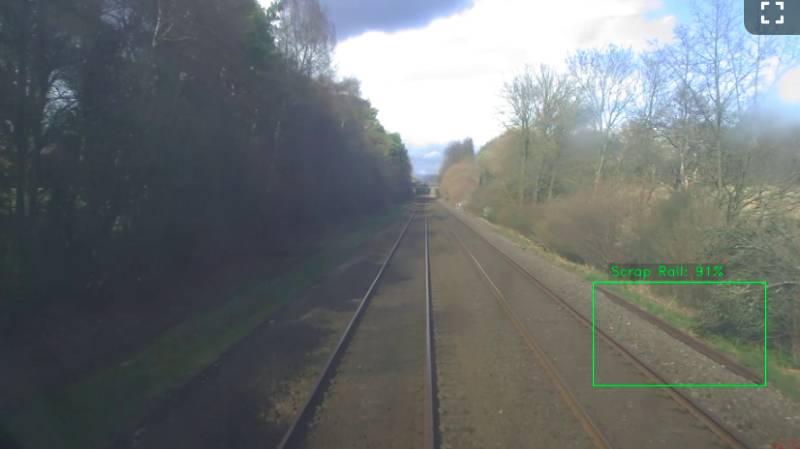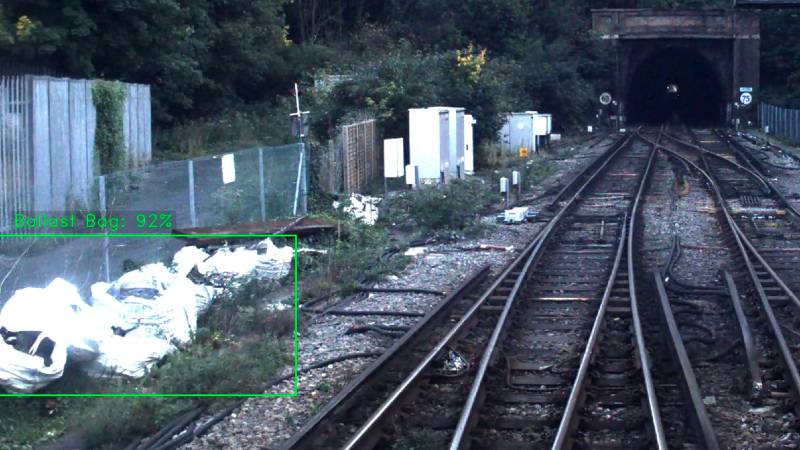We’re broadening our use of artificial intelligence (AI) and video technology to make the railway safer, cleaner and greener.
We’re trialling AI and Automated Intelligent Video Review (AIVR) to find and remove forgotten scrap left on the side of the railway.
It’s a first for our network and adds to the range of applications for AIVR across our infrastructure.
AIVR is a phone-sized device mounted to the front of any train and used to take high-definition footage from across the network.
Next AI analyses this footage. In this case, it looks for scrap rail, sleepers and bags of ballast, and maps their locations using the global positioning system (GPS). Think of it as a train’s eye view.
Our maintenance teams can then plan how and when to safely remove the items and either re-use or recycle them.
Wayne Cherry, senior innovations engineer at Network Rail, said: “While AIVR is already in use across other parts of Network Rail, this will be the first time this technology has been used in this way with AI and could be a real game-changer.
“Not only is scrap on the side of the railway unsightly, but it can also become an obstacle during planned engineering work, block safe walkways or delay our teams accessing part of the railway infrastructure to make repairs during disruption.”
Emily Kent, co-founder and director of One Big Circle, the tech company that developed AIVR, said: “This is a really exciting application of AI developed in collaboration with Network Rail experts.”
We’re trialling the project on the Wessex route – one our busiest infrastructure routes, taking in all or part of Surrey, Berkshire, Hampshire, Dorset, Devon, Somerset and Wiltshire. And it’s already reaping benefits.

A safer railway
Scrap on the side of the track is a significant hazard to our people, particularly because most of our engineering work is done at night. In fact, on our Wessex route, ‘slips, trips and falls’ are the largest causes of injury.
Martyn Shaftoe, workforce health, safety and environment adviser for the Wessex route and the lead for this project, described the issue in more detail.
He said: “Unfortunately, over recent years, the railway has become somewhat of a dumping ground for discarded railway sleepers, scrap rail, redundant ballast bags and many other assets. The challenge we face is there is no definitive list of where these materials or assets are.”
This new technology allows us now to accurately locate scrap material without the need for anyone to walk along the railway, helping keep our staff safe. Martyn called it “a huge safety improvement opportunity”.
But that’s not the only advantage …
An efficient solution
Scrap can also become an obstacle during planned engineering work. It can block safe walkways or delay our teams who need to access the railway to carry out repairs during disruption.
Finding and removing scrap material more safely and efficiently will help us keep the railway running more smoothly for you and freight, with fewer delays and cancellations.
A greener rail
We can reuse some of the scrap material as well as recycle it. For example, Bomac concrete sleepers are no longer manufactured but still in demand as replacements on sidings and on some stretches of track.
Thanks to this tech, we’ve identified 40 of these sleepers on a site between Yeovil and Weymouth. They can now be recovered and stored for future use across the business. In this way, we’re saving money and helping the planet.
Martyn said: “To be able to help the industry potentially save money by reusing or recycling this treasure-trove of scrap materials is a brilliant prospect and we look forward to hopefully rolling it out more widely across the business later in the year.”




